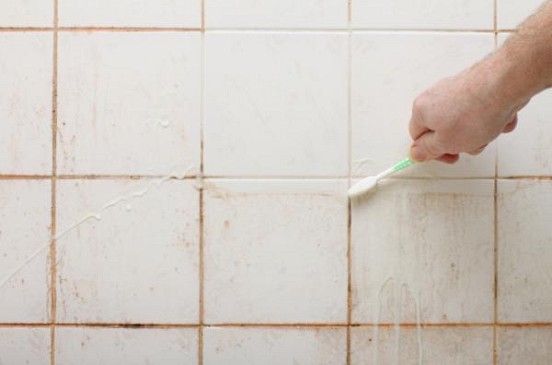Pink Mold Removal And Prevention In The Bathroom
If you have pink stains in your shower and pinkish sludge on your shower curtain, then you’re probably looking at a case of pink mold. What is this common bathroom infestation and how do you get rid of it?
What Pink "Mold" Really Is
Pink mold usually appears as a fuzzy (but not in a good way!) or slimy buildup in damp areas of your home -- most commonly on the shower curtain or the grout between bathroom tiles. Although this gunk is commonly called either “pink mold” or “pink mildew,” it is actually a type of water-borne bacteria, Serratia marcescens.
And it’s not always exactly pink, either. Its color -- caused by a red pigment produced at room temperature -- is often closer to orange.
The Health Dangers of Pink Mold
If you spot pink mold anywhere in your home, get rid of it ASAP.
Even though this type of bacteria is not as dangerous as black mold, all kinds of health problems can result if you come into contact with pink mold in the shower or elsewhere in the house. The risk is worst for elderly family members, young children, or anyone who has a compromised immune system. Even your pets are vulnerable!
Here is a list of the many health hazards associated with pink mildew:
- Breathing difficulties
- Endocarditis
- Gastrointestinal ailments
- Infection of open wounds or sores
- Meningitis
- Osteomyelitis (bone infection)
- Pneumonia
- Septicemia (blood poisoning)
- UTIs (urinary tract infections) and bladder infections
Steps to Pink Mold Removal
To remove pink mold from hard surfaces (walls, countertops, ceilings, shower chairs, etc.) and tile grout:
- Prepare for pink mold cleanup by donning protective gear: gloves, breathing mask, and goggles. Never allow your skin to come into direct contact with mold or bacteria.
- Scrub all areas affected by pink mold, using a loose paste of baking soda and dish detergent (in a 4:1 ratio).
- Rinse well.
- Spray with a half-and-half solution of water mixed with either bleach or vinegar. (Never use bleach and vinegar together; the combination creates toxic fumes.)
- Allow to soak for 10 minutes.
- Scrub and rinse once more.
To remove pink mold from shower curtains:
- Check care instructions on the shower curtain label for any special precautions.
- Place shower curtains in washing machine with 2 or 3 towels.
- Sprinkle with ½ cup baking soda.
- Use ½ cup of liquid laundry detergent in the dispenser.
- Launder with warm water on a delicate setting.
- Hang to dry in a well-ventilated place (outdoors if possible). Never dry vinyl or fabric shower curtains in the clothes dryer.
Pink Mildew and Mold Prevention
Whew! Getting rid of that pink stuff in the shower is not a simple process. Fortunately, once it’s gone, you can successfully keep it at bay with the following easy tips.
- After a thorough cleaning, treat affected hard surfaces with a biocide.
- Ventilate your bathroom to prevent excessive moisture in the air. Switch on the exhaust fan before you shower and leave it on for 20 minutes after.
- Wipe down bathroom walls with a squeegee or towel after showering or bathing.
- Clean up any soap and shampoo residue, which may act to feed the mold.
- Hire a licensed plumber to take care of any water leaks.
- If you have a problem with pink mold (or have experienced one in the past), remove bathroom carpeting. Replace with a rug or bathmat that can be washed and dried readily.
Laura Firszt writes for networx.com.
Related Articles
Looking for a Pro? Call us (866) 441-6648

Average Costs
Related Experiences

An Amazing, Reliable Plumber Answered My Call On New Year’s

Awesome Kitchen Tile Backsplash




